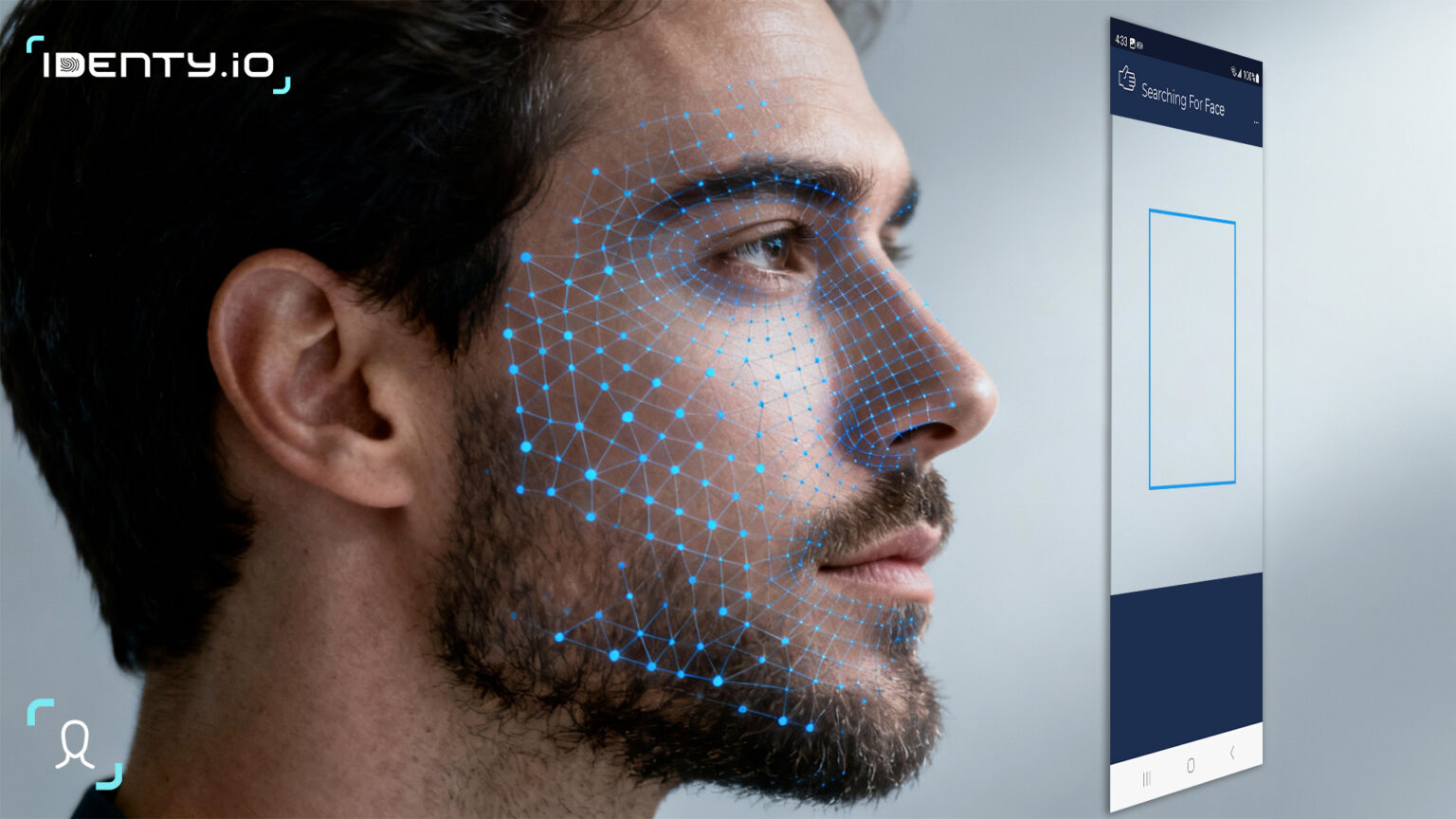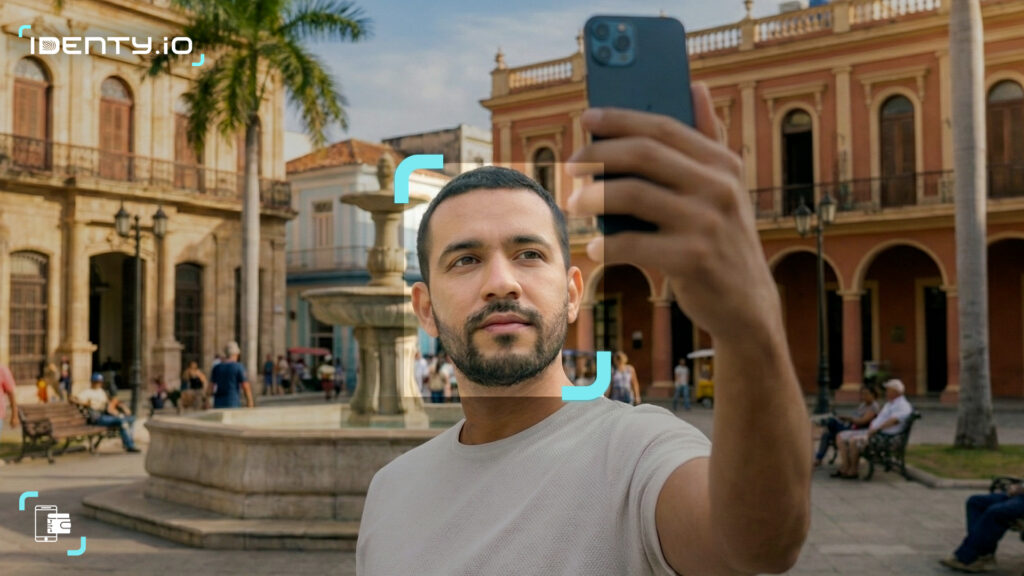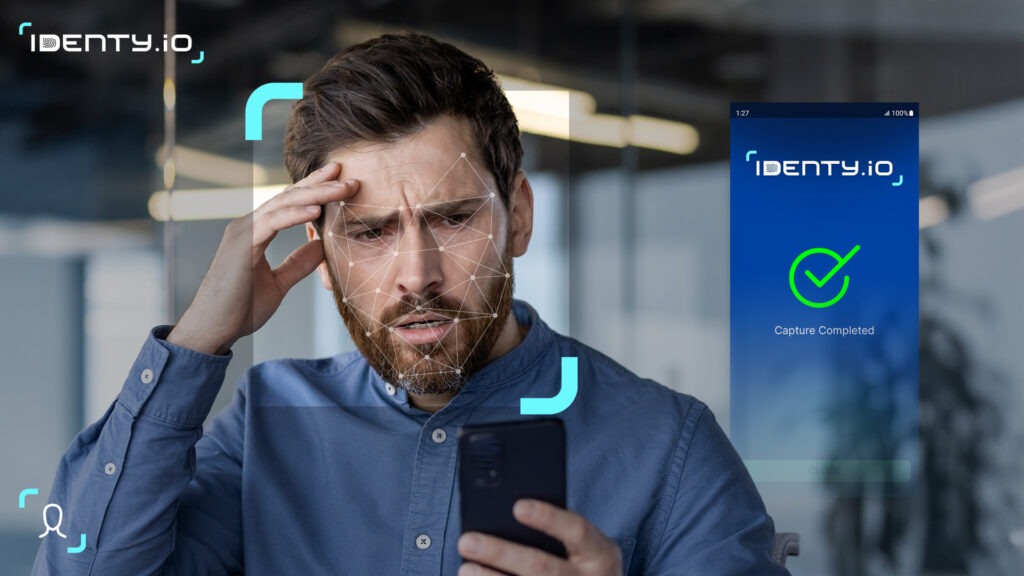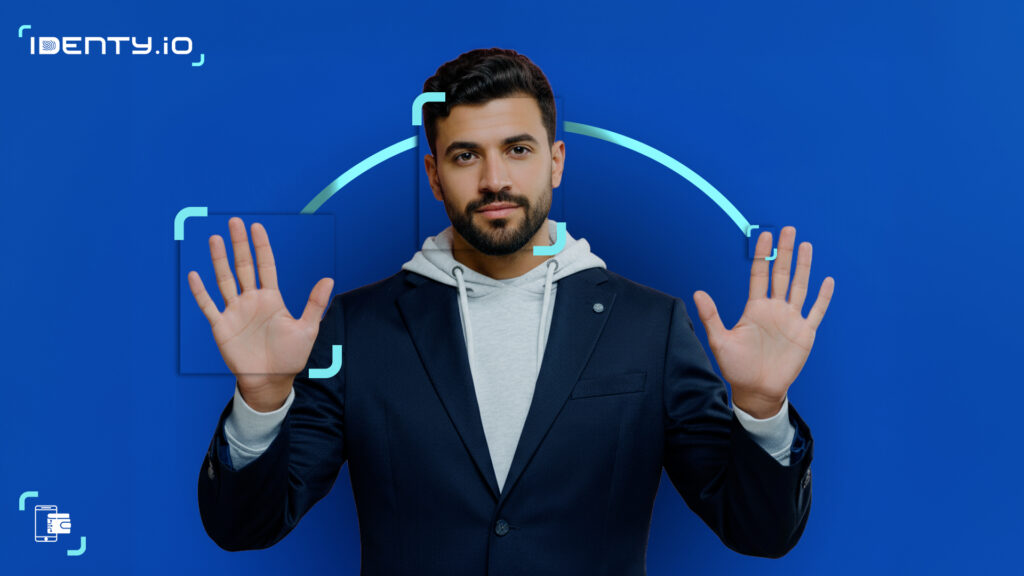Table of Contents
ToggleFacial recognition has become central to modern digital security but not all systems work the same way. The most familiar example, Apple’s Face ID, is designed for personal device authentication. In contrast, facial recognition software such as Identy.io serves a much broader purpose: verifying users’ identities in banking, government, and online services.
Understanding the difference between these technologies helps clarify how biometric identity verification works and why Identy.io’s approach is transforming digital onboarding and security.
Face ID: personal device authentication
Apple’s Face ID was introduced to replace passwords and fingerprints with a simple glance. It’s a one-to-one verification system that confirms whether the person holding the phone is the device’s registered owner.
How Face ID works
Face ID relies on Apple’s TrueDepth camera, which projects over 30,000 infrared dots onto the user’s face to build a 3D depth map. This data is converted into a secure mathematical template and stored in the iPhone’s Secure Enclave never sent to Apple’s servers.
When you look at your phone, Face ID performs real-time liveness detection by checking eye movement and depth consistency. If the face matches the stored template, access is granted instantly.
Key Advantages
- Exceptional accuracy: false match rate of around 1 in 1,000,000.
- Privacy by design: biometric data stays entirely on-device.
- User control: enrollment and deletion managed by the user.
Face ID is ideal for personal authentication, unlocking a phone, approving payments, or signing into apps but not for verifying someone’s identity across institutions or systems.
Facial recognition software: identity verification at scale
While Face ID focuses on a single device, facial recognition software like Identy.io is designed for remote identity verification across digital platforms. It enables companies, banks, and governments to confirm a person’s identity securely and in compliance with data protection laws.
How Identy.io’s facial recognition works
Unlike Face ID’s hardware-based system, Identy uses software-based AI algorithms that work on any smartphone or webcam. Users simply take a selfie, and the software analyzes it in real time using passive liveness detection identifying micro-movements, reflections, and texture differences that prove the user is real, not a photo or video replay.
The system then creates a biometric template (or embedding) and compares it against an official ID document or database record. All of this happens locally on the user’s device, ensuring privacy and speed.
Main Benefits
-
- Universal compatibility: works on iOS, Android, or web browsers without special sensors.
-
- High accuracy: validated in NIST FRVT benchmarks for facial recognition performance.
-
- GDPR compliance: biometric data processed locally, under explicit user consent.
-
- Anti-spoof protection: compliant with ISO 30107-3 PAD Levels 1 & 2, blocking photos, masks, and deepfakes.
Identy.io’s technology is ideal for KYC (Know Your Customer), digital onboarding, and secure logins offering the same convenience as Face ID, but with enterprise-grade identity assurance.
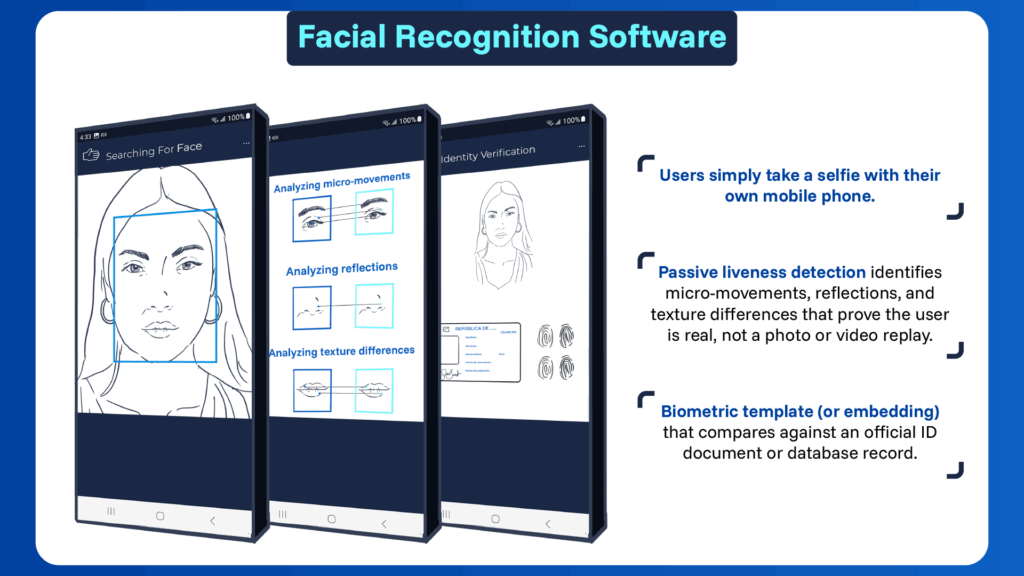
Privacy and regulatory compliance
Face ID: local and private
Apple’s architecture is inherently privacy-friendly. Facial data never leaves the device, meaning Apple doesn’t control or store biometric information. This design aligns naturally with GDPR principles of data minimization and user consent.
Identy.io: privacy by design
Identy.io extends this privacy-first philosophy to organizations that must verify user identities remotely. Its local processing model ensures that no biometric data is transmitted without explicit authorization. Combined with ISO 27001 certification and strong encryption, Identy.io enables businesses to meet global data protection and AML regulations while maintaining a seamless user experience.
The key distinction lies in purpose:
| Aspect | Face ID | Identy.io Facial Recognition |
| Use Case | Device unlock | Identity verification |
| Scope | One user (1:1) | One-to-one or one-to-many |
| Hardware | TrueDepth camera (Apple only) | Any smartphone or webcam |
| Data Storage | On-device Secure Enclave | Local processing, GDPR compliant |
| Applications | Unlock, payments | Onboarding, KYC, authentication |
Face ID secures your phone. Identy.io secures your digital identity.
Both rely on facial biometrics, but Identy transforms that capability into a scalable, privacy-safe identity verification solution.
In a world where trust and security define digital interactions, understanding the difference between Face ID and facial recognition software is essential.
Face ID offers convenience and security for personal use, a perfect solution for consumer devices. Identy.io, however, brings biometric verification to the enterprise level, combining accuracy, compliance, and accessibility.
By using AI-driven liveness detection, local processing, and GDPR-compliant design, Identy stands out as a leader in secure digital identity verification proving that privacy and technology can coexist.
Bibliography
-
- Identy.io (2025). Facial Recognition Software Overview.
- NIST (2024). Face Recognition Vendor Test (FRVT).
- ISO (2023). ISO/IEC 30107-3: Presentation Attack Detection.
- European Union (2018). General Data Protection Regulation (GDPR).
- Identy.io Documentation (2025). Liveness Detection and On-Device Processing for Privacy.

